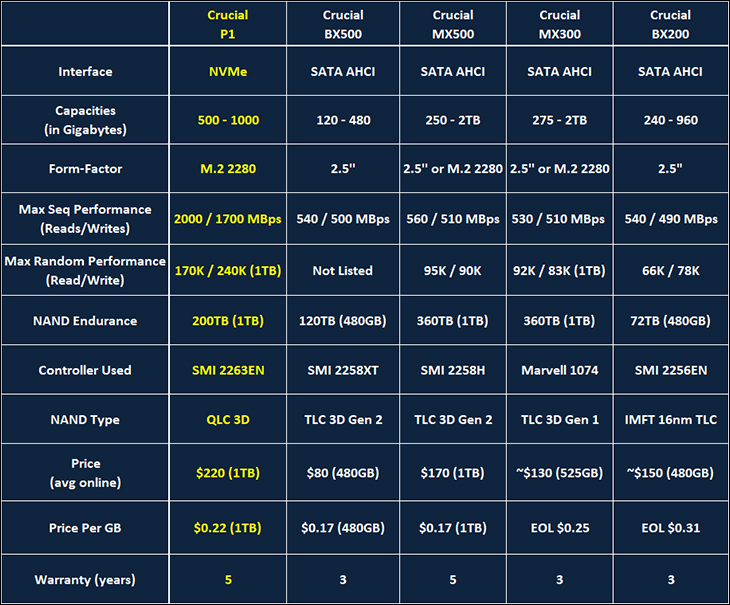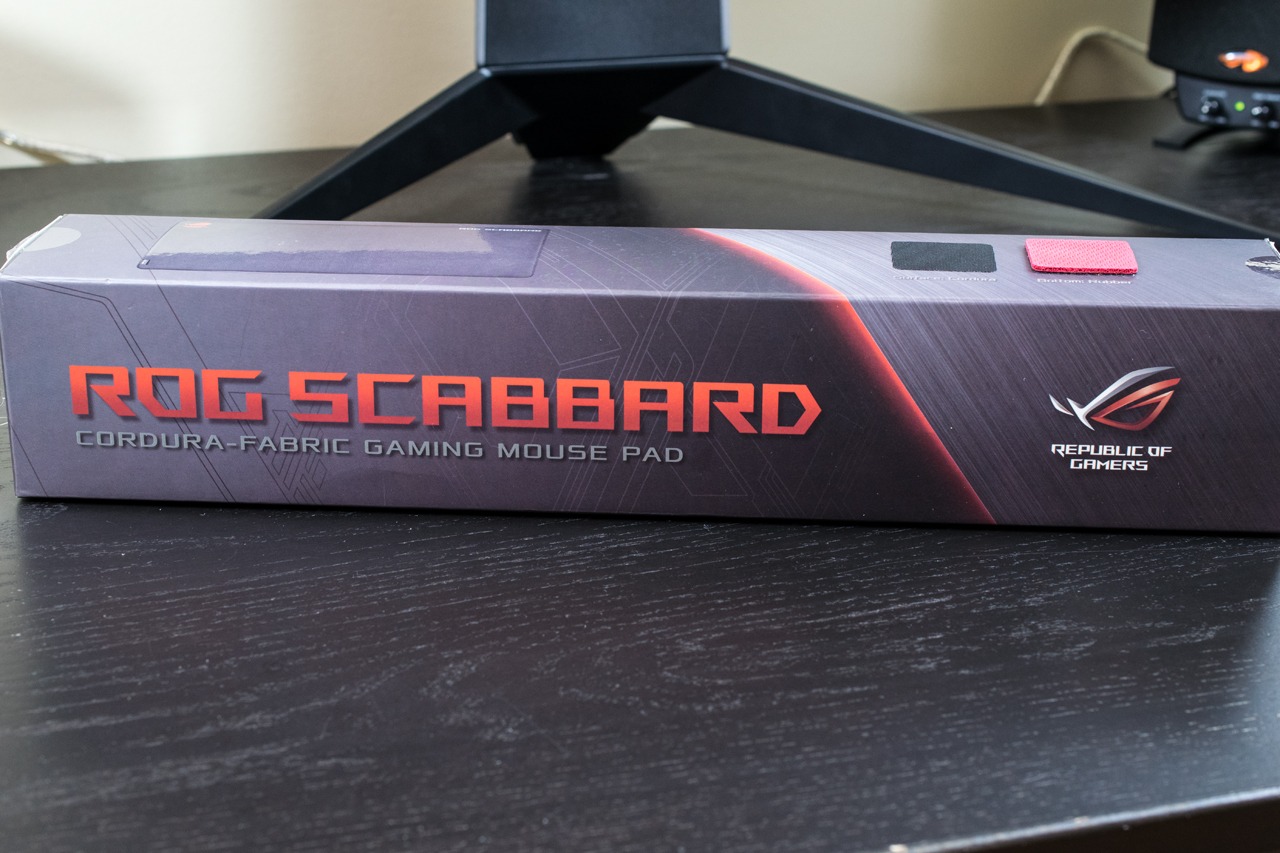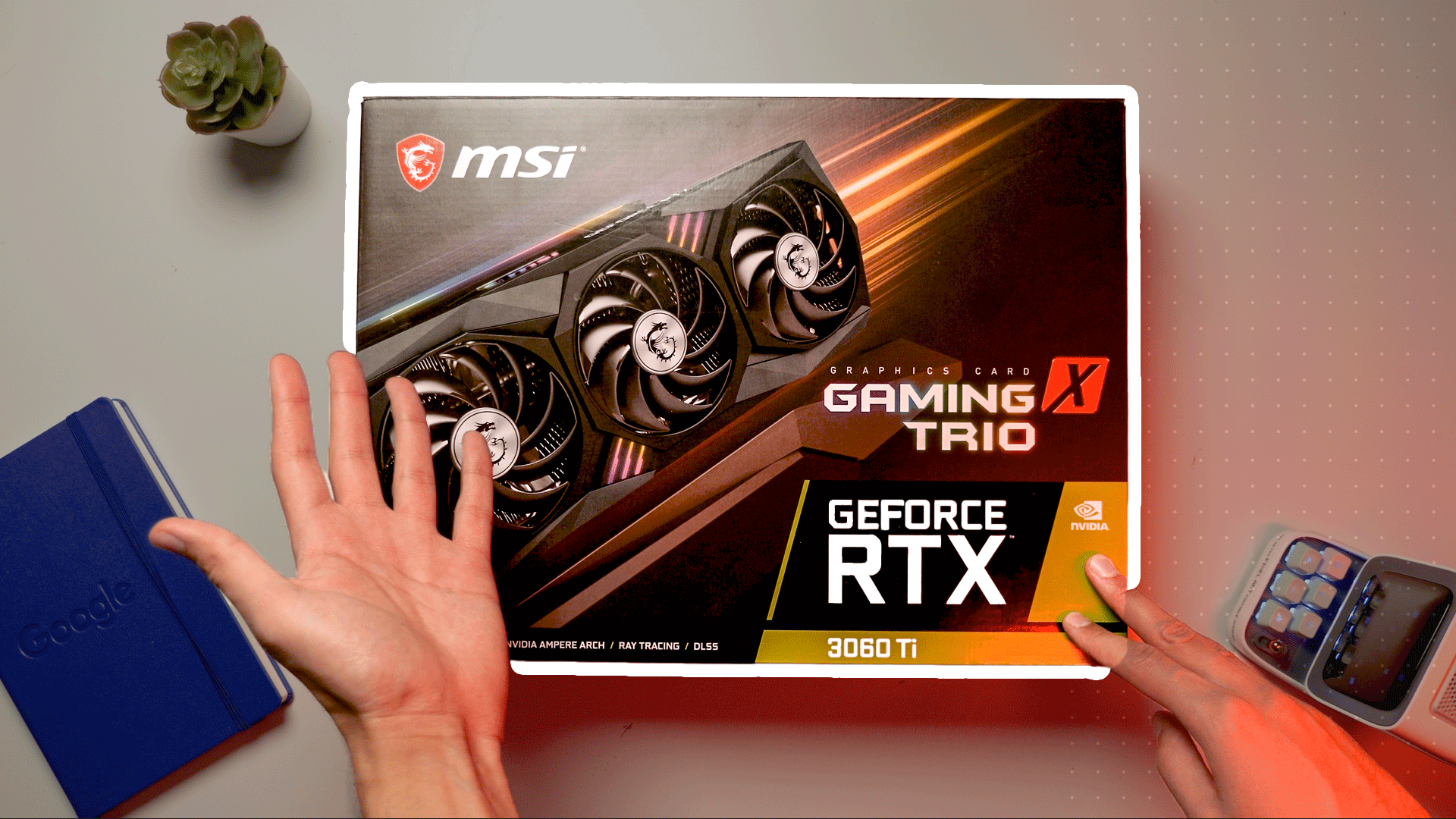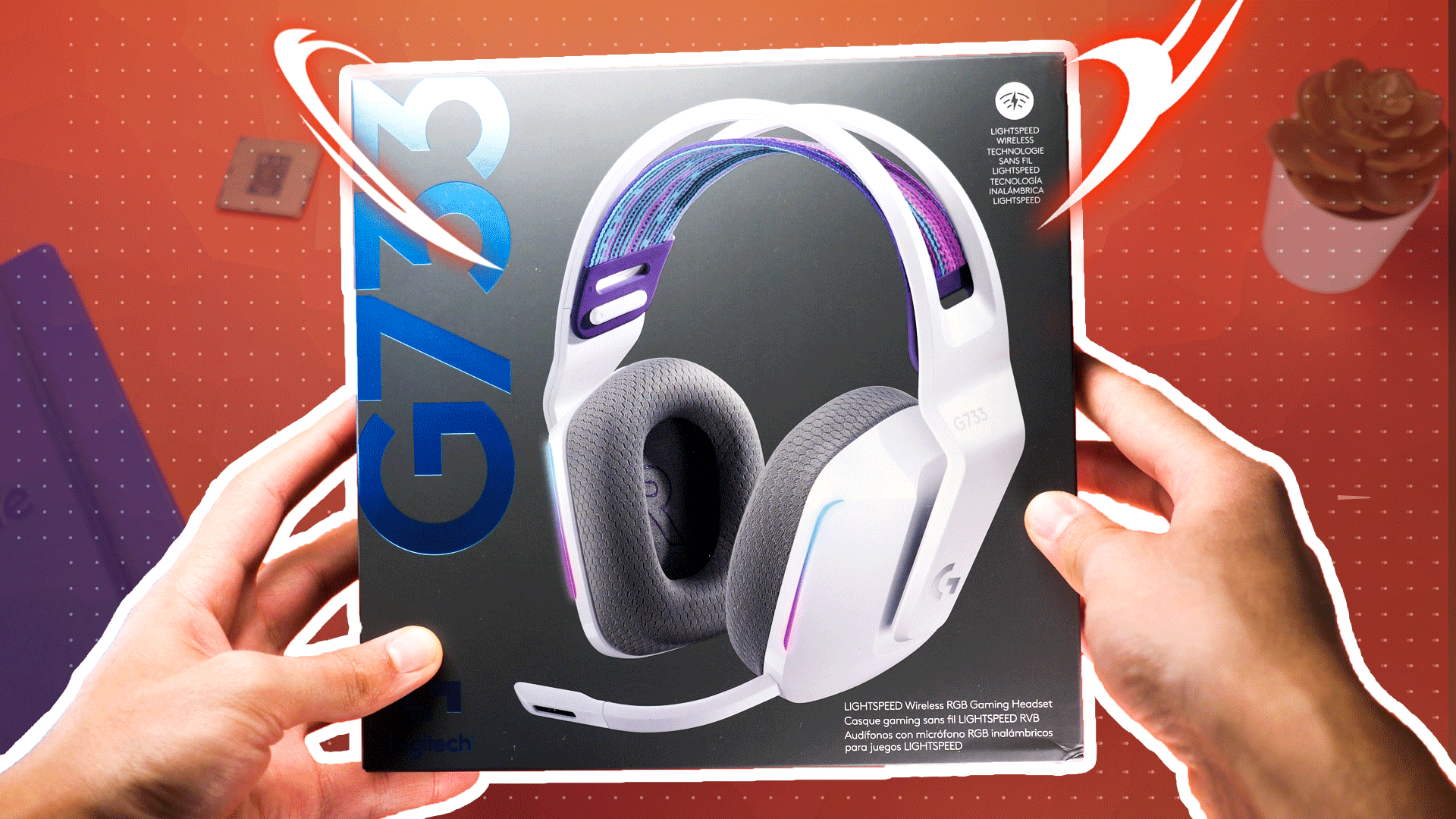In the recent Crucial BX500 article we made mention of IMFT’s troubles with getting 4-bits per cell QLC NAND production ready for primetime. Obviously, the issues are either now solved, or they were a touch… overblown to begin with. That is because Crucial has just released another solid-state drive series – the P1 or ‘Performance generation 1’ – and toady we will be putting the 1TB capacity version of the P1 under the microscope to see how good it really is… and if it deserves the newly minted ‘Performance’ moniker.

The use of QLC is certainly going to be controversial, but what is not is the MSRP of the new first ever Performance series. To be precise this relatively large 1TB P1 SSD has a manufacturer’s suggested retail price of only $220(USD)… or a mere 22 cents per GB. On first blush that firmly places it in the lower end of the mainstream or high end of the budget-oriented marketplaces. Nothing could be further from the truth. This is not a MX or BX type solid state drive. Instead, not only is the P1 Crucial’s first ever QLC NAND based model… but also its first NVMe model to make it to the home marketplace. In fact, this is four PCIe lane NVMe based model – so ‘slow’ is not even in this model’s lexicon.
NVMe stands for Non-Volatile Memory Express, and as the name suggests is PCIe and not SATA based. Without getting too deep into the differences, NVMe removes the SATA controller and its slow bus from the equation and replaces it with the faster, lower latency PCIe bus. This in turn removes the SATA and its AHCI bottlenecks, allowing for speeds of upwards of 2000MB/s and incredibly lowered latency thanks to the drive’s controller talking directly to the CPU without any ‘middlemen’.
This unique, dare we say ground breaking, combination of near SATA asking price with NVMe performance is all thanks to IMFT’s QLC 3D NAND. In this review we will not only go over the pros and cons of the new Crucial P1 1TB drive but how Crucial’s decision to use QLC NAND impacts performance. We will also go over the ways in which to mitigate some of these issues and then with all this information you can make your own judgement call on the new P1 series. We do however have a sneaking suspicion that you will agree with our assessment and put the P1 1TB near the top of your list… as this drive creates a new definition of the term ‘value’.











